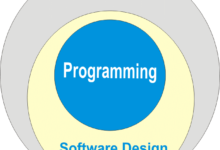Spiral model
Spiral model
The Barry Boehm was mentioning the spiral model in his paper of 1986. In the spiral model, each phase has been beginning with goal design and ends with the customer or client progress reviewing. The spiral model is an important component of the SDLC models and that should also provide risk handling. In software engineering, the spiral model is the combination of the iterative and waterfall model and this model is used for the large project. The model contains many of the loops and each loop has also called the phase of the software development process. The software is repeatedly has passed through these phases in the iteration it is known as the spiral.
Spiral model Design:
The model has contained the four-phase in the SDLC process.
• Identification:
The first phase of the model is the identification. In this phase that starts gathering the requirement given the baseline. In the quadrant, the model has produced the system requirement, identification, subsystem requirement, and all the requirement are done in this phase. So this phase has been including all system requirements then continues the communication with the customer.
• Design:
After completing the first phase then start the second phase is the Design. These phases start with the conceptual design in the baseline and also include the design architecture, physical product design and then the final design is the subsequent spiral.
• Build & Construct:
The next phase is the build phase. The contract phase has also referred to the production of the actual software in the spiral model. So the design of the software is done then send to the customer for the feedback.
In the quadrant of the construct that is the high clarity requirement and complete detail of the software working it is called construct or build. At last, they are sent to the customer for feedback.
• Evaluation and Risk Analysis:
The last phase of the spiral model is Risk Analysis. This phase includes estimating, identifying and technical feasibility.
At the end the customer or client after testing the first iteration, the client is evaluated and provides the feedback.
Application of the Spiral model:
In the software industry, the spiral model is widely used with the natural development process.
Typical uses of the spiral model:
• The requirement is more complex
• New production fo the software should be released in this phase and get the feedback of the customer.
• A customer is not sure about the requirement.
Advantage and disadvantage of the spiral model:
Advantage:
• The user can easily see the system
• The system can be divided into the small part
• Better risk management
• Capture accurate requirement
• Using the expensive prototypes
Disadvantage:
• The process is more complex and high.
• Number of the stages are high
• Require expensive documentation.
• A complex of the management.




